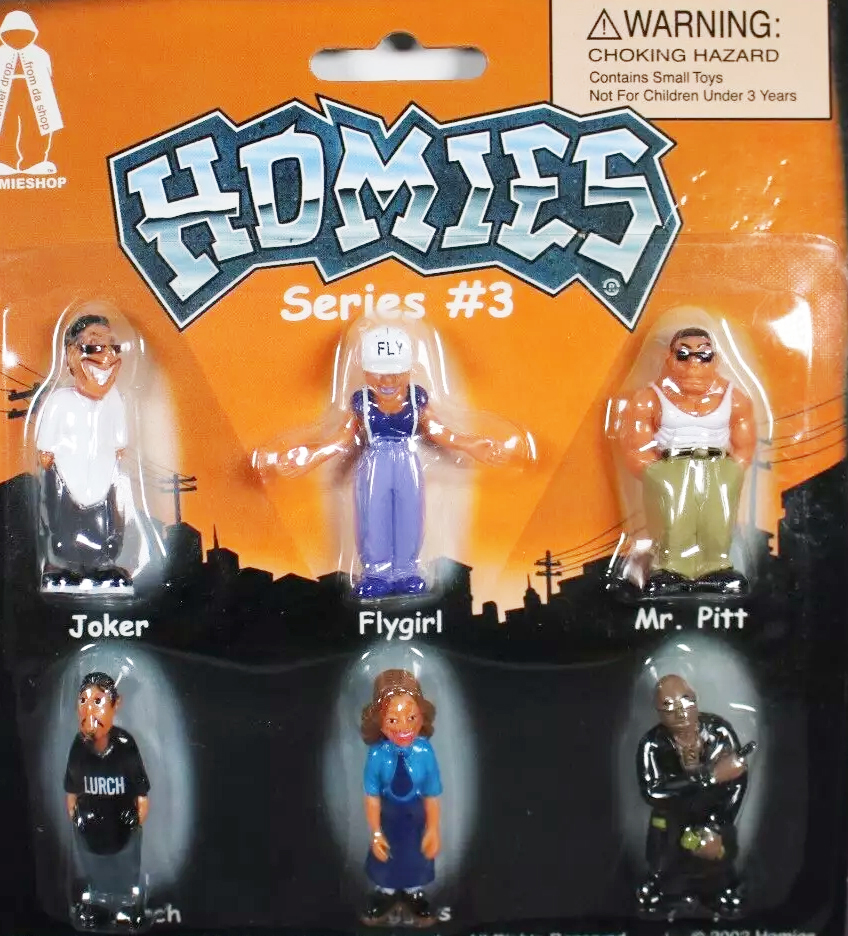In the early 2000s, a small, quirky toy line called Homies burst out of vending machines and into pop culture. Created by Chicano artist David Gonzales, these pocket figures—each with a name, look, and backstory—resonated far beyond their 50¢ origins. Homies grew into comics, merch, and even animation, and today they’re a nostalgia-fueled collector favorite.
The Origins of Homies
Gonzales introduced the Homies in late-’90s comic strips, sketching a neighborhood cast inspired by real people—friends, family, and local personalities. In 1998, the first figures arrived in West Coast vending machines. Small in size but big in personality, they quickly spread nationwide.
Early waves drew criticism for leaning into tough-guy imagery. Gonzales responded by broadening the universe to emphasize positive and everyday roles—teachers, barbers, mechanics, musicians, abuelitas—alongside more street-styled designs. That pivot is a big reason the brand endured and found a wider audience.
The Figures: Characters That Tell a Story
At roughly two inches tall, Homies are all silhouette and swagger: baggy fits, bandanas, braids or fades, sharp brows, expressive stances. Crucially, each character carries a name and backstory—from big-hearted leaders to artists and gearheads—so collecting feels like assembling a living neighborhood, not just a checklist.
Fan-favorite archetypes ranged from shy romantics to fashion-forward scene-stealers. The secret sauce wasn’t articulation—it was personality.
Expanding the Homies Universe
Success brought new waves and spinoffs: apparel, accessories, online comics, and animated shorts. Gonzales launched adjacent lines like Mijos (younger characters) and The Hoodrats (mischief and humor). The ecosystem gave fans many entry points while deepening the core community vibe.
Collectibility and Rarity
What started in vending capsules evolved into a robust secondary market. Early figures and certain variants—especially from the first series—can be tougher to find, with premiums for original packaging or clean paint.
- Hunt strategy: confirm series/wave, compare molds and paint, and watch for reissues or bootlegs.
- Condition tips: gloss scuffs easily; store in clamshells or small drawers, away from heat/sun.
- Community: swap meets and online groups are great for trading duplicates and verifying variants.
Cultural Impact
Homies landed because they felt specific and real. The line reflected family, work, friendship, and neighborhood pride—alongside redemption arcs and humor. It also nudged the toy industry toward broader representation, proving there’s demand for characters outside the mainstream mold.
The Legacy
Though the craze cooled from its peak, Homies remain fixtures in display cases and memory. Gonzales continues to explore the universe with new projects and figures. For many fans, a tray of Homies isn’t just a collection—it’s a snapshot of culture and community, miniaturized.
Related eras & lines
If you enjoy culturally specific minis and advertising-toy crossovers, try our looks at California Raisins, or widen the timeline with History of Action Figures (USA).
